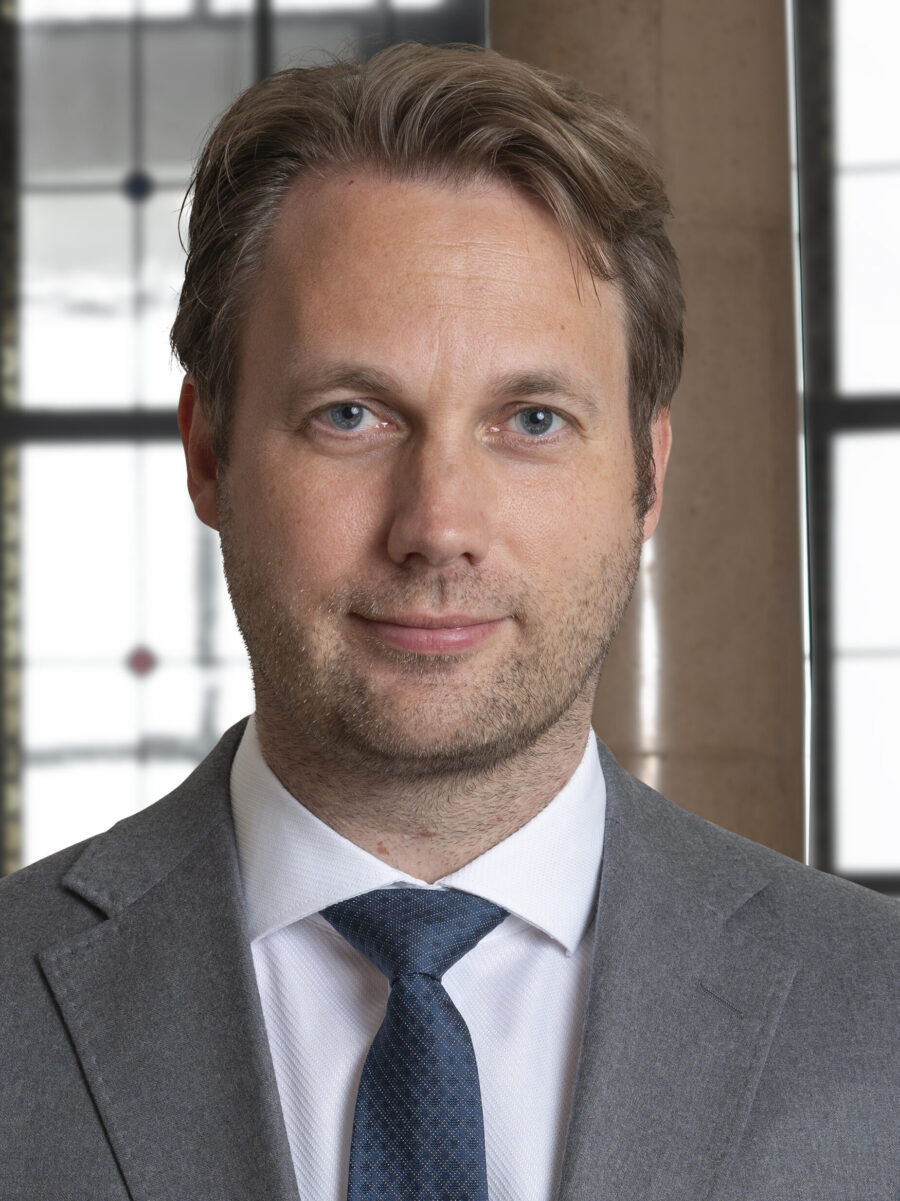
Mr Urbahn, as Head of Multi Asset Strategy & Research, you and your team are responsible, among other things, for generating investment ideas for the multi-asset strategies. How do you come up with investment ideas?
The experience of having experienced several economic cycles and crises on the financial markets professionally is probably the most helpful. Even if the past does not repeat itself, it often rhymes, so historical comparisons are helpful in decision-making. To this end, we use our own models and think in scenarios, but also read a lot of external research or discuss with capital market strategists from the big financial houses as well as independent providers. This helps us to understand what the consensus thinks and what, if anything, is already priced in. Over the last few years, I have also started listening to financial podcasts, especially from the US, because that is where the big money is managed. It is therefore important to know how US investors assess the capital markets. In addition, specialists for different financial markets are interviewed, so you can constantly broaden your knowledge. You never stop learning.
Can you give us an example?
In early 2022, I noticed that hedge funds were betting heavily on a falling Brazilian real. There was a record short position – despite the fact that commodity prices were already rising and that the Brazilian central bank had raised interest rates much earlier and more than the major central banks, given the already high inflation in Brazil. At the time, Latin America/Brazil hardly featured (positively) in broker research reports and podcasts. Consequently, the consensus was not optimistic about Brazil. To verify this, I phoned ETF traders to see if they were seeing inflows in the area. In response, I was almost laughed at. Hardly anyone was interested in the topic. And brokers warned me that it was too early to invest in Latin America. But Latin American shares were extremely cheaply valued – the risk premium correspondingly high. Moreover, Latin America had just started to outperform in an environment of falling US equity prices – which is rather unusual and an indication that investors were not overly positioned there. Consequently, we assessed the risk-return profile as attractive, discussed the idea in the Investment Committee and decided to invest broadly in the Asset Allocation Committee – also in light of the fact that Latin American equities have little correlation with our in-house “Quality Growth” equity style and thus help to smooth the volatility of the multi-asset portfolios.
What other ideas are there and how are they implemented?
Above all, we try to create added value in the sub-allocation, ie which regions/sectors/segments represent a sensible addition to the existing multi-asset strategy. For example, within Alternatives, this could be industrial metals. If we find an idea attractive not only tactically but also in the longer term, we often publish a focus article on it. This has the advantage that we deal with a topic even more intensively and thus penetrate it better. It also helps our clients to better understand our motives.
Our tasks also include reducing or substituting tactical positions after hopefully positive developments. In November, for example, we partially switched an S&P 500 ETF into a currency-hedged S&P 500 ETF after the EUR/USD had fallen significantly below parity and we saw upward potential for the EUR in the medium term. When generating ideas, we look not only at fundamentals but also at sentiment and positioning data. The ideas are then often implemented using ETFs, but also investment funds.
If we broaden the view, what is your very big picture for the next decade?
In the coming years, in our view, we can expect not only higher inflation on average than in the last decade, but also significant fluctuations in inflation, ie increased volatility in inflation. The reason lies primarily in the longer-term supply bottlenecks for raw materials, the energy turnaround, the increase in climate catastrophes, deglobalisation and the demographic development, which is likely to lead to an increasing shortage of labour.
What are the risks?
In an environment of increased inflation and, in particular, increased inflation volatility, economic cycles are likely to be shorter because central banks will have to act more restrictively than in the last decade in order not to fuel inflation further. As a result, planning certainty is significantly lower for companies and investors, which is why they are more reluctant to invest and demand a higher reward for the risks taken. This weighs on investment valuations and also suggests increased volatility across all asset classes.
A strong focus on real assets also remains appropriate against the backdrop of high government debt levels worldwide, as higher inflation rates are likely to be used by governments through financial repression to ensure debt sustainability. With nominal investments, it is not likely to be easy to achieve clearly positive real returns in such an environment. In equities, investors should focus on the lowest possible valued companies with strong market positions (pricing power) and robust cash flows. Higher inflation volatility in the coming decade thus harbours risks for the capital markets, but also opportunities for flexible investors.
What do you think of cryptocurrencies as a new asset class?
In recent years, the narrative about cryptocurrencies has been that they are uncorrelated to risk assets and represent a protection against inflation. I have always been suspicious of this view because Bitcoin & Co. do not yet have a long history and consequently have not experienced periods of high inflation. Moreover, it has once again proven true that as soon as there are futures and ETFs for asset classes, the correlation automatically increases because these can then simply be sold in a global de-risking – they therefore no longer benefit from the illiquidity that had led to a certain uncorrelatedness. Fortunately, real estate is illiquid, otherwise house prices would also fluctuate much more and make owners correspondingly nervous.
Nevertheless, I have to say that I find the use cases of blockchain technology very exciting and am also somewhat invested in cryptocurrencies for my children. For me, it is a kind of call option. You invest some money, but you have to be aware that it can fall towards zero. On the other hand, it has a lot of potential if the optimists’ forecasts come true. Ultimately, however, this is more speculation than investment.
Has much changed in your work in recent years?
In terms of content, three fields in particular have come into sharper focus. The central banks have become even more important for the financial markets with their huge purchase programmes, so that even more attention must be paid to them. If liquidity is withdrawn from the market, all investments fight for less liquidity, which puts pressure on valuations. On the other hand, the bond side is fun again, because you can earn yields here again. At the latest since the Corona crisis and with the energy transition, commodities are also increasingly in focus. And this trend is likely to continue over the next decade thanks to the energy transition, so we are also investing a lot of time in research and analysis. Last but not least, the options market has become much more relevant. Options on individual shares have seen extraordinary growth. In 2021, for example, the total volume of options traded exceeded the traded volume of the underlying shares for the first time. Accordingly, options markets are having an increasing impact on equity markets, particularly in terms of volatility and event risks. Against this background, it is important to understand who the major players in the options market are and how options traders are positioned. Moreover, 2022 has just taught that it can make sense to hedge with options because correlations between different asset classes are not stable.
Our interview guest

Ulrich Urbahn
Ulrich Urbahn has been working for Berenberg since October 2017 and is responsible for quantitative analyses and the devel-opment of strategic and tactical allocation ideas, and is involved in capital market communications. He is a member of the Asset Allocation Committee and portfolio manager of the Berenberg Variato. After graduating in economics and mathematics from the University of Heidelberg, he worked for more than 10 years at Commerzbank, among others, as a senior cross asset strate-gist. Mr Urbahn is a CFA charterholder and was part of the three best multi-asset research teams worldwide in the renowned Extel survey for many years.



